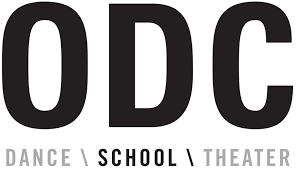
Don’t let anyone tell you there’s only one way to learn.
The Vedic approach to meditation was meant to be easy and accessible for people in the real world. And that’s why I take a flexible approach to teaching. So you can take your Vedic Meditation course in-person, or you can take it over Zoom. Or you can take the online FLOW Meditation Course at your own pace. All are great, effective ways to learn. And whichever option you choose you’ll get plenty of direct support from me to answer questions, refine instruction and help you overcome any obstacles you might bump up against in making meditation a regular practice. If you decide to learn it will be my honor to share this teaching with you.
STEP 1
Discover if the Vedic approach clicks with you.
You might already know a lot about the Vedic approach to meditation and how I teach. If so you can proceed to Step 2. But if you want more information before jumping in I recommend you watch this intro video, which will give you a good overview of the practice, and will also give you a feel for how I present things. You can also click the button to schedule a free call with me so I can answer all your question and help you decide which of the courses described below is best for you. Or if you have a specific question just reach out via email and I promise to get back to you soon.
STEP 2
Choose your course of instruction.
I offer traditional courses in Vedic Meditation and a related practice called FLOW Meditation. Both courses go step-by-step, with each lesson building on the previous one, so that you graduate knowing how to meditate effectively, with the experience and knowledge you need to make it daily habit, and with a ton of follow-up support. It’s awesome.
Option 1: Take the FLOW Meditation Self-Paced Course
This is the easiest and most affordable way for you to learn. FLOW Meditation is based on the traditional Vedic Meditation course, but restructured to make the practice more accessible for those learning on their own schedule. The course consists of 12 high-quality video lessons (each about 25-30 minutes long) which teach meditation using a proper mantra, plus mindfulness, breathwork and visualization techniques so that you have a full suite of tools available to be less stressed and more grounded. Plus you’ll enjoy a full support program including weekly online group meditations, a private WhatsApp group, a 16-lesson follow-up course and quick answers to all your questions. (Note: clicking the button will take you to another site where the course is hosted.)
Cost is $299 or five monthly payments of $70
“I was dabbling with meditation apps on and off for about a year and I was a little hesitant to take an online course, but I’m so glad I did. The course is very easy to follow, you can do it at your own pace, and it’s very simple to apply. My anger and stress levels have greatly reduced, and meditation has become been a vital piece of my mental well-being. I can’t say enough good things. Thank you James!”
“I started James’s Flow Meditation online course at a very stressful time in my life, about a month after my younger son was diagnosed with Type 1 Diabetes at the age of 3. I had heard about James through another teacher who I respect and trust greatly. This work has helped so much with managing my stress levels. And after the course was over I found James’s regular follow-up lessons very engaging and reminded me of the greater meaning behind the practice and encouraged me to stay the course.”
Option 2: Take a Private Vedic Meditation Course
A Vedic Meditation course is taught in a traditional immersion format consisting of four 90-minute sessions taken either in-person or over Zoom, usually over the course of 4-7 days. It’s the best option for people who want a very personalized learning experience. This is the course I took, with my wife, 16 years ago. It changed our lives in more ways than we could’ve ever imagined, and it can change yours.
“The private course was the only way I could make learning work with my schedule. I initially imagined it would be challenging to embed the practice in my daily work routine and weekends (that are more unstructured in nature) and I actually look forward to my meditation breaks and have been able to enjoy them twice a day, almost every day since learning over almost 2 years ago. In general I feel less stressed and worried about things. And as I result I feel lighter and happier.”
“When I took the Vedic course with James I’d been meditating with apps like Headspace for about two years, but something important was missing. Since transitioning my practice to his teachings I’ve experienced a measurable reduction in feelings of exasperation and feel more balanced, present, connected and alive. ”
Private Vedic Meditation Immersion courses are available for individuals, or for couples and small groups of friends/family who want to share the experience of learning together. The course is offered on a sliding scale based on your financial situation, number of participants and travel costs.
Hmm…What’s the difference between Vedic and FLOW Meditation?
The short answer is that they are simply different names for the same easy, accessible type of meditation. I use the word “Vedic” to describe the traditional immersion course in which all the instruction is done live. “FLOW” is the name I gave the online course I created to make the Vedic approach more accessible. If you want to learn more about the similarities and differences between Vedic and FLOW Meditation you can go to this page, or email me and we can set up a quick call where I can answer all your questions and find out which course is right for you.
STEP 3
Enjoy a program of free follow-up support.
Whether you choose to learn in-person or online you’ll receive a ton of follow-up support. There are group meditations offered online multiple times a week dedicated to helping you establish, nourish and deepen your practice, a 16-week follow-up course with helpful tips and reminders…let’s just say I do whatever I can to support you along the way.
Your teacher?
Hi, I’m James Brown.
No, not that James Brown. I’m also not the most overtly spiritual guy you’ll ever meet, and my wife refuses to let me take myself too seriously. I probably joke around and swear more than the typical meditation teacher. I teach from my own real-world experience, without dogma and without tossing around a lot of Sanskrit or ancient Buddhist terminology. So I’m certainly not everyone’s teacher…but I might be yours. You can learn more about me, and my unlikely path to becoming a teacher, here. (You also get to see what I look like in a cool hat.)



















